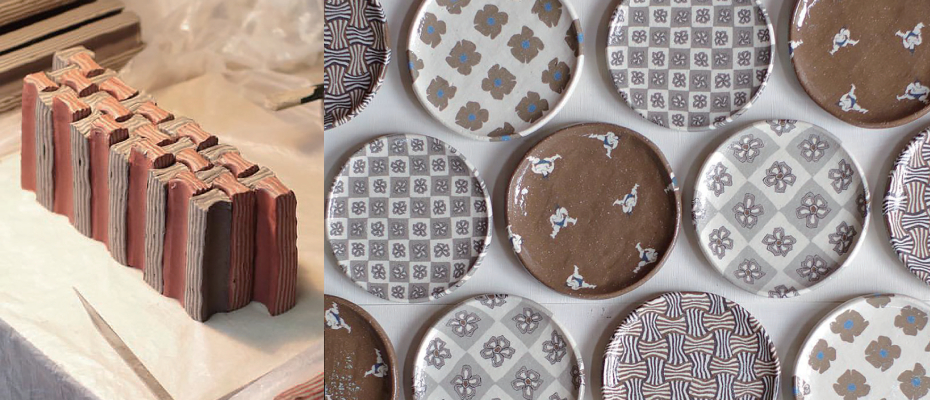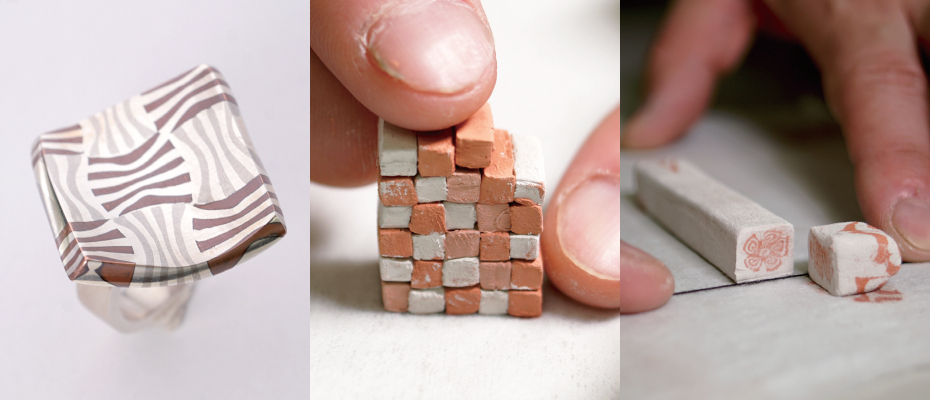
Both「Pottery」and「Silver clay」 are using clay, so a lot of technique can be applied each other. However, not all of them can be applied since they have own character. This certification, one of the special silver clay characteristic “toughness “ is featured and brushed up with the existed Nerikomi technique.
Checker design
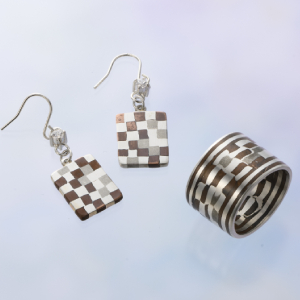
Learning the basic technique of Nerikomi, which is the way of stacking clays. The piece is easily made with clay cube and slicing.
Turtle shell stripe pendant
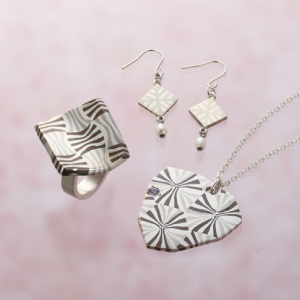
Changing the conmbinaiton of stacking clay makes the new pattern.
Ripple brooch
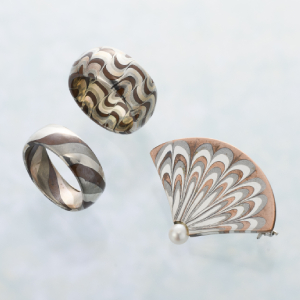
It is the expression, only clay can express. Stretching clay makes the strained design.
Inlay pattern ring
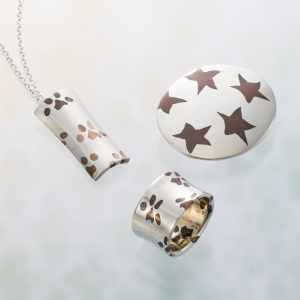
Very charming and unique pattern in the ring. this technique can be applied to ring or pendant work.
Five petal design ring
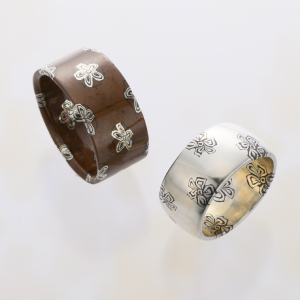
Streching the cube and by “Squeezing“, the detailed pattern is made. Enjoy how the pattern will be changed, which is one of the joy part of Nerikomi technique.
Gold fish pendant

Making the complicated design using the multiple Nerikomi technique. Caululate the color and the way or Nerikomi and you can make your own design.
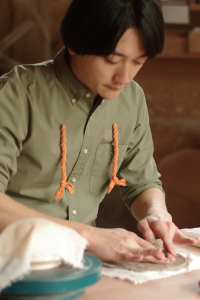
I am making my work using the technique called “Nerikomi “ which make the pattern from mixing different color of soil/clay. This Nerikomi technique is originated from 1300 years ago. I think this technique with Silver and Copper clay maximize and widen the way of expression your artwork, also takes Nerikomi technique to the new level. With this technique, Totally new type of Jewerelly will be made with Art Clay, I think.
| Year | history |
|---|---|
| 2008 | Graduate Nagoya Zokei University of Art & Design |
| 2009 | The 3rd「 Pottery lighting road」 Excellence Award |
| 2013 | The 1st「 Seto・Triennale prize」 prize |
| 2016 | Yakimono world「 Otokomae(Handsome)UTHUWA」 Second place prize LEXSUS NEW TAKUMI PROJECT 2016[ “Takumi“] selected |
| 2017 | JR Nagoya Takashimaya「 Tomoro Mizuno exhibition」 Kyoto Takashimaya「 Tomoro Mizuno exhibition」 |
| 2018 | Shibya Hikarie 「made in Seto~Seto Handmade work~」exhibit |
The conventionally perceived Nerikomi process in Japan, consists of making a block of clay containing assembled layers of colored clays pressed together to form patterns or images. The block is sliced with a wire repeatedly to make a series of nearly identical patterned slabs. Items were first brought to Japan from China in the 7th Century A.D. that used a related construction method. However, historically this type of structural imaging, used in clay, seems to have been adapted by the Chinese, from glass beads with imaging. The beads were brought by traders down the Silk Road from Egypt & Mesopotamia to China. At least by 2000 B.C., Mesopotamian itinerant glass craftsmen, working in Egypt and the abundance of materials found in the Nile Delta, were factors in the development of faience, glass and related detailed imaging used in the beads. Art Clay is introducing Nerikomi processes applied to our silver and copper clays to open up new creative possibilities to our users.
